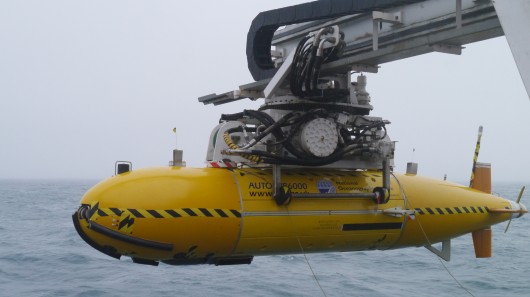
Curious about what's living on the deep sea floor? Well, the Autosub6000 AUV (autonomous underwater vehicle) is helping us find out. Led by Dr. Kirsty Morris, a team at the UK's National Oceanography Centre (NOC) has equipped one of the unmanned submarines with a high-resolution photographic system. As a result, it's claimed to be far more effective at identifying deep-sea life than the usual approach of scientific trawling.
Previously developed by NOC engineers, the Autosub6000 autonomously travels untethered along preprogrammed deep-sea routes, continuously mapping the sea floor as it does so. It can descend to a maximum of 6,000 meters (19,685 ft), staying under for up to 70 hours per charge of its lithium-polymer battery pack.
In this study, it's also continually shooting photos of the sea floor, with a downward-facing camera. Scientists subsequently analyze the images to identify the creatures in them, estimating the animals' size based on the number of pixels they take up.
By noting how often different types of animals show up, their distribution over wider areas of the sea floor can be extrapolated, along with the overall biomass of the region. Additionally, by comparing images taken in the same area on different dives, it's possible to determine how populations change over time.
By contrast, when scientific trawling is performed, a net is first dragged along the sea floor. Researchers then examine what's in the net, when it's brought to the surface. According to the NOC scientists, however, this approach over-represents organisms that live right on the sea bed, plus it misses some.
In the current Autonomous Ecological Surveying of the Abyss (AESA) project, for instance, the AUV photos indicated that anemones were the most common animal on the bottom – this had not been indicated by trawling, as the anemones were too mangled by the nets to be recognizable.
"We are creating photographic maps of animals on the seafloor, which can scale up to the size of cities," said AESA co-ordinator Dr. Henry Ruhl. "This allows us to understand links between ecology, ecological functioning, and human impact in a way that was not previously feasible."

 Previous page
Previous page Back to top
Back to top







